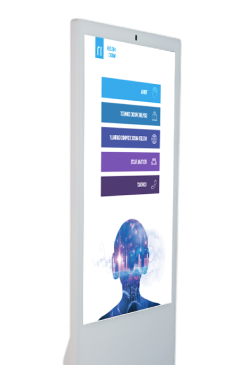

Event Solutions

Our Work

The Environmental Benefits of Digital Signage and LED Posters
In today’s world, sustainability and environmental consciousness are becoming increasingly important. Businesses across various industries are looking for ways to reduce their environmental footprint while maintaining effective communication and marketing strategies. Digital signage and LED posters offer a compelling solution. By reducing the need for printed materials and leveraging energy-efficient technology, these modern tools provide significant environmental benefits. In this blog, we will explore how digital signage contributes to a greener future and highlight the energy-efficient features of modern LED technology.
Reducing the Need for Printed Materials
The Environmental Cost of Printing
Traditional printed materials, such as posters, brochures, and banners, come with a significant environmental cost. The production process involves:
- Paper Consumption: Large quantities of paper are required, contributing to deforestation and habitat destruction.
- Ink and Chemicals: Printing inks and chemicals often contain volatile organic compounds (VOCs) and other harmful substances that can pollute the environment.
- Waste Generation: Printed materials have a limited lifespan, leading to considerable waste that often ends up in landfills.
The Digital Alternative
Digital signage and LED posters eliminate the need for physical printing, offering a sustainable alternative. Here’s how they contribute to environmental conservation:
- Paperless Communication: Digital displays replace paper-based posters and banners, significantly reducing paper consumption.
- Lower Chemical Use: Eliminating the need for printing inks and chemicals helps reduce the release of harmful substances into the environment.
- Waste Reduction: Digital signage can be updated and reused endlessly, reducing the waste generated by disposing of outdated printed materials.
Energy-Efficient Features of Modern LED Technology
Advances in LED Efficiency
Modern LED technology has made significant strides in energy efficiency, making it a more sustainable option compared to traditional lighting and display technologies. Key features include:
- Low Power Consumption: LEDs consume significantly less power than incandescent and fluorescent bulbs, reducing overall energy usage.
- Long Lifespan: LEDs have a much longer operational life, reducing the frequency of replacements and the associated environmental impact.
- Reduced Heat Emission: LEDs emit less heat, lowering the energy required for cooling systems in indoor environments.
Benefits of Energy-Efficient LED Displays
- Lower Energy Bills: Businesses using LED displays can benefit from reduced electricity costs due to the lower power consumption of LEDs.
- Decreased Carbon Footprint: Lower energy usage translates to a reduction in greenhouse gas emissions, contributing to efforts against climate change.
- Sustainable Marketing: By incorporating energy-efficient digital signage, businesses can enhance their sustainability credentials and appeal to environmentally conscious consumers.
The Future of Sustainable Digital Signage
Innovations and Trends
The future of digital signage is geared towards even greater sustainability with innovations such as:
- Solar-Powered Displays: Integration of solar panels with digital signage to harness renewable energy.
- Smart Energy Management: Advanced systems that optimize power usage based on ambient light and display content.
- Recyclable Materials: Development of LED displays using recyclable and environmentally friendly materials.
Corporate Responsibility
Adopting digital signage not only benefits the environment but also aligns with corporate social responsibility (CSR) initiatives. Companies can showcase their commitment to sustainability by transitioning to eco-friendly digital solutions, enhancing their brand image and building trust with consumers.
Community Impact
By reducing reliance on printed materials and adopting energy-efficient technologies, businesses contribute to the broader goal of environmental conservation. This shift can inspire other organizations and individuals to embrace sustainable practices, creating a ripple effect that benefits the entire community.
Conclusion
Digital signage and LED posters represent a significant step forward in reducing the environmental impact of business operations. By cutting down on paper use and leveraging energy-efficient LED technology, these modern tools offer a sustainable alternative to traditional printed materials. As we move towards a greener future, adopting digital signage can help businesses not only improve their environmental footprint but also achieve cost savings and enhance their corporate image. Embracing these technologies is a win-win for both the planet and the bottom line